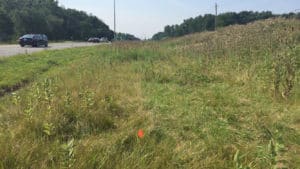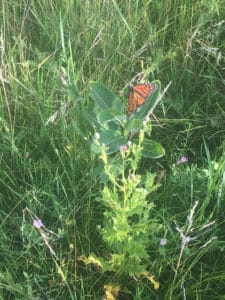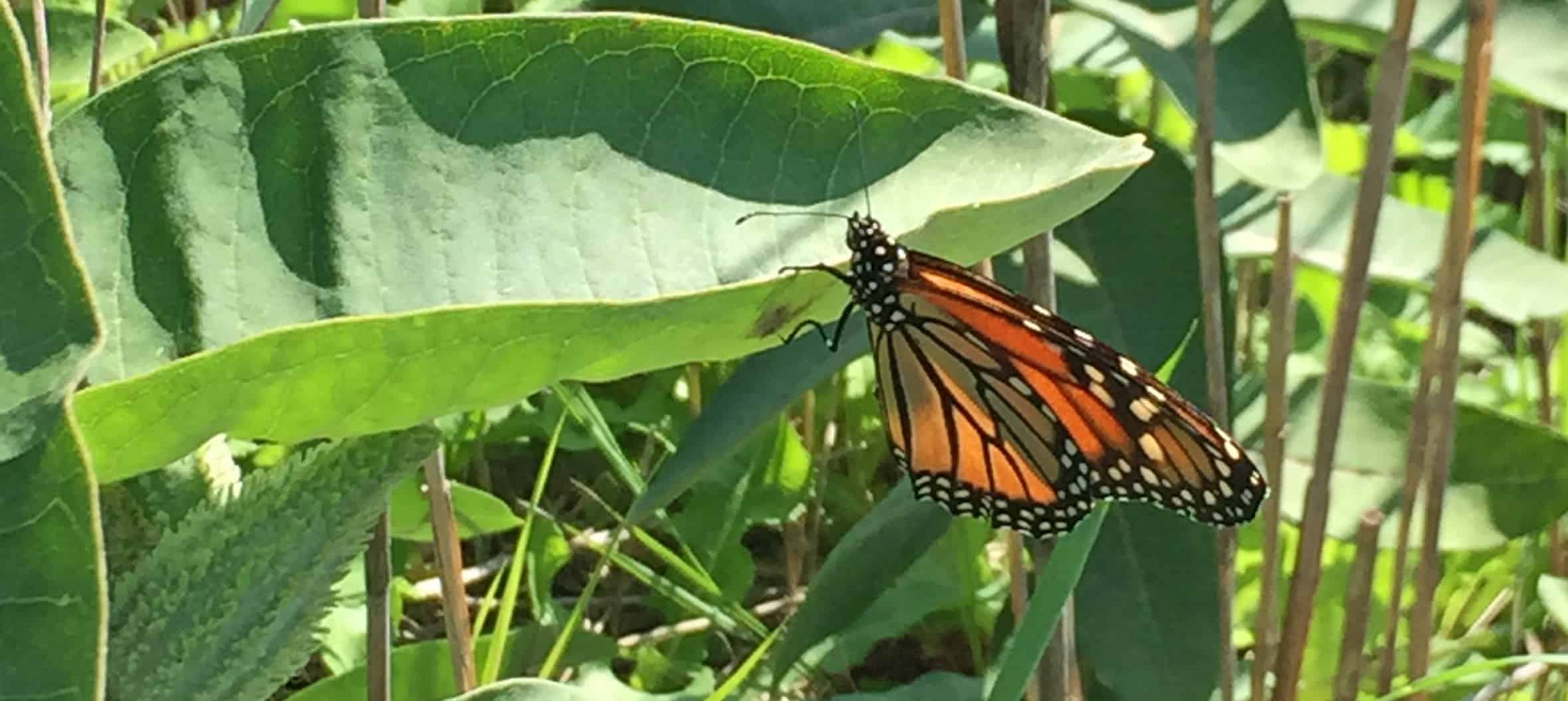Share this article
Moderate roadside mowing a boon for monarchs
Mowing smarter may be the best strategy to improve monarch habitat along roadsides.
“Monarchs are declining across their range, and particularly in the East,” said Samantha Knight, a program manager at the Nature Conservancy of Canada and the lead author of a study published recently in Global Ecology and Conservation. “By targeting optimal mowing practices on their breeding grounds we’re hoping to increase their egg-laying rate reproductive success to increase the breeding population.”
Roadside areas may not seem like an optimal environment for monarchs (Danaus plexippus) to lay eggs, Knight said. But with the right kind of mowing regime, vegetation next to the large amount of roads and areas of similar characteristics along power lines or railway tracks add up to potential environment that could be optimized for monarch breeding.
These areas, Knight said, are already highly managed and are perfect for monarchs because the vegetation is maintained in a perpetual early successional state in order to keep plants from cluttering up roads or train lines, or interfering with electrical transmission.
The study adds to a growing body of research that shows how informed mowing or yard care can improve developed landscapes for birds, bees and other wildlife, whether it’s along roads or in your own backyard.
Eastern North American monarch butterflies face a number of threats across their large range, which spans multi-generational migration routes between Canada and Mexico. One cause of their decline is a loss of milkweed, a plant monarch larvae rely on for food and lay their eggs on. Previous research has shown the butterflies prefer young milkweeds to older plants, possibly because the young plants have just enough of a specific toxin, cardenolides, that monarchs absorb in their bodies as a possible deterrent to predators.
Knight, who conducted this research at the University of Guelph in Ontario, and her co-authors set up 49 experimental plots over the summers of 2016 and 2017. They partnered with the Ontario Ministry of Transportation to use two stretches of highway near Sarnia in the Canadian province.

An experimental plot mowed by the side of the highway in Ontario. ©Alex Kelly
They divided each plot in half, leaving vegetation to grow naturally on one side and implementing different mowing treatments on the other side from the end of June to the beginning of August over the two years of the project. They monitored these plots to see how mowing regimes might affect the growth of milkweed and monarchs’ egg-laying rates on these plants integral to their survival.
They found that the best treatment for monarch egg success was to mow the roadside plots in mid-season, or about the second or third weeks of July — a week or two before peak egg laying season at the end of that month.
Knight said this ensures the butterflies have plenty of the young milkweed they prefer to lay eggs on. Mowing later in the season means that many milkweed plants covered in eggs or larvae will be taken down, while mowing the plants earlier means that the milkweed will be a little too mature by the time the monarchs lay their eggs in droves.
But she said it was also important that the plots weren’t mowed a second time for at least 40 days. This non-mowing period ensures that the milkweed has time to grow into optimal size for monarch breeding, and gives the butterflies eggs the roughly 22 days they need to hatch into caterpillars and develop into butterflies.
“If you are mowing every month, you are probably going to kill a lot of monarchs before the larvae leave the milkweed,” Knight said, adding that the researchers recommend only mowing once during the whole summer. These management strategies will ultimately help increase monarch numbers and buffer against some of the other problems they might face on their migration routes such as changing climate or other human-caused problems.

A monarch lays eggs on a milkweed plant. ©Samantha Knight
“If we are able to increase their survival and egg-laying rates, then we can contribute to a more robust adult population that then migrates down [to Mexico],” she said.
Knight is careful to mention that while this treatment seems to work best in southern Ontario, different mowing times will likely be necessary in other parts of the monarch range. Some studies conducted on further south in their range showed mowing could occur a little later.
She also noted that future research should take other species into account when considering the optimal mowing regimes for along roads, rails and power lines, since different vegetation heights is important to breeding birds and other wildlife.
The risk of traffic to these animals should also be considered to ensure that wildlife managers are not creating a type of trap for monarchs or other wildlife by creating optimal habitat in an area where they could be hit by cars, she said. Future studies should look into minimizing the effects of traffic on wildlife that use roadside habitat.
Header Image: Monarch butterflies thrive the most on young milkweed. ©Alex Kelly








